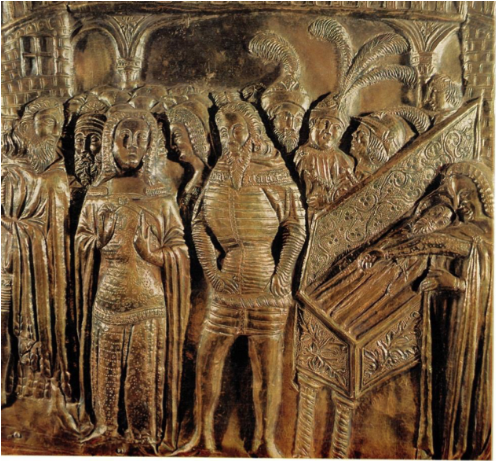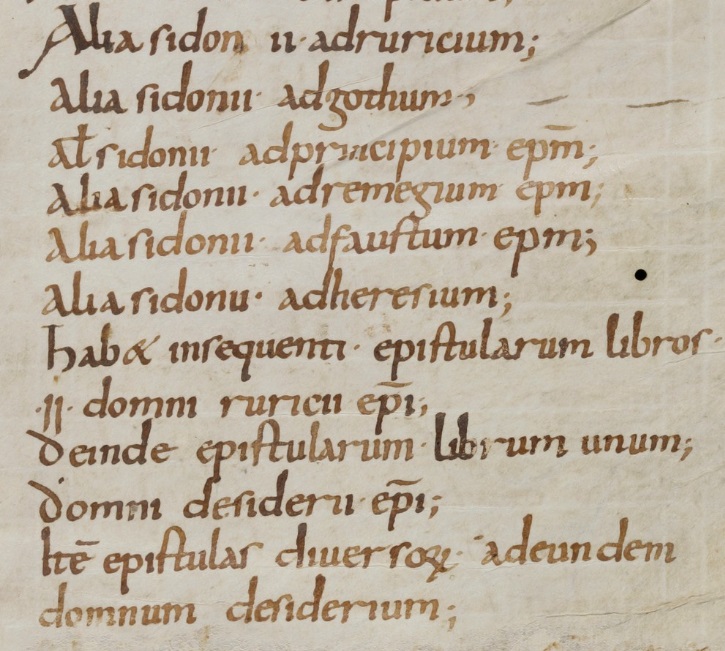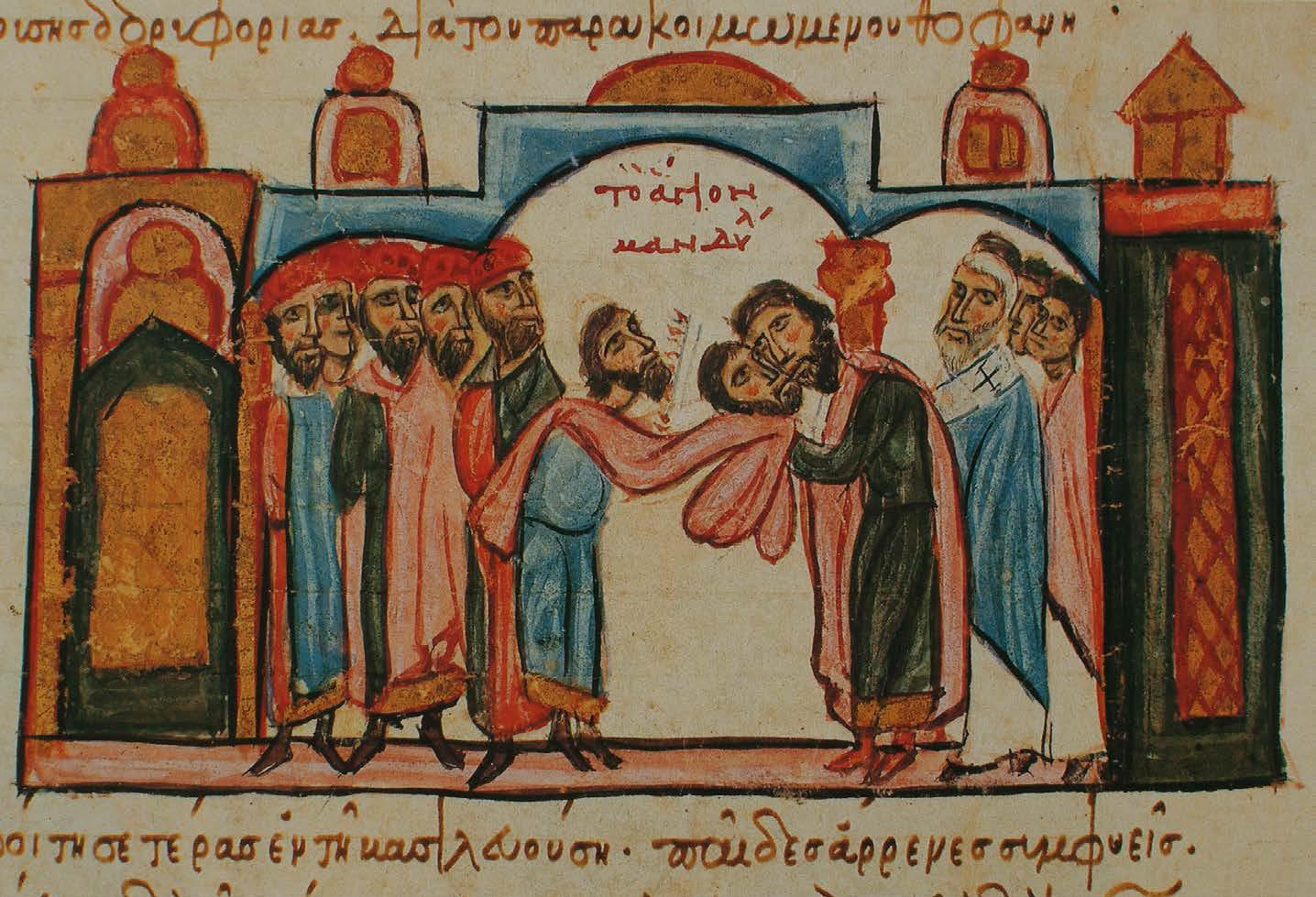The Workshop on Late Antiquity and Byzantium is pleased to announce our next meeting:
Thief, Donor, Potentate, and Mourner: The Story of the Shrine

The Chest of St. Simeon (detail).
Scanned from Ivo Petricioli, St. Simeon’s Shrine in Zadar (Zagreb: Drago Zdunić, 1983).
Anita Jambrek
Ph. D. Student, University of Chicago Divinity School
The golden shrine (sarcophagus) commissioned in 1378 by Hungarian Queen Elisabeth Kotromanić is the most important piece of evidence for the cult of St. Simeon in the Adriatic. The shrine is of prismatic shape with a roof on top, decorated with various scenes of Biblical, historical, and personal events. By focusing on the four representations of Elisabeth, this paper will trace her role in the making of the shrine and the development of the cult of St. Simeon.
Tuesday, November 22 — 4:30 pm in CWAC 152
We look forward to seeing you there!



